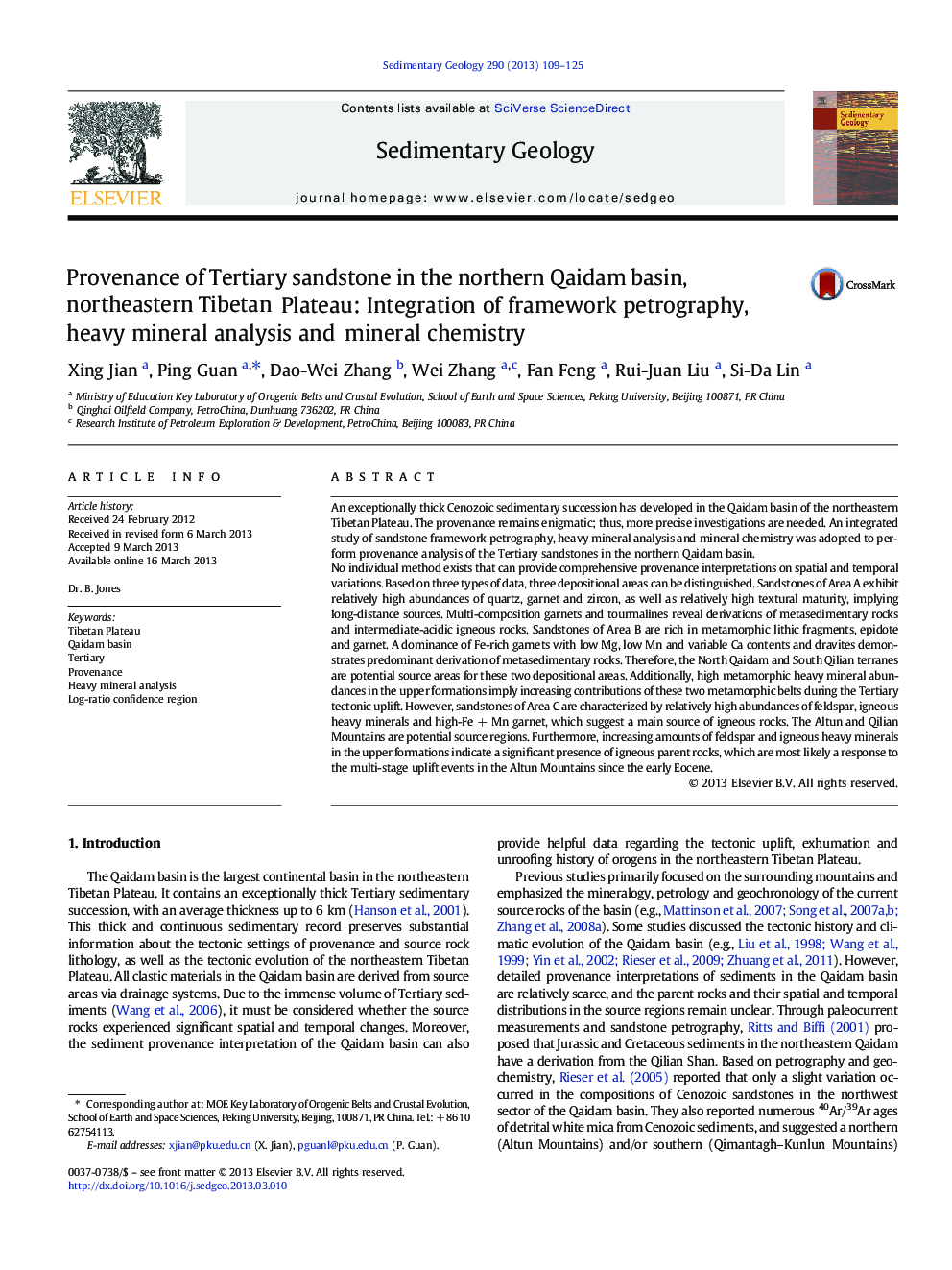| Article ID | Journal | Published Year | Pages | File Type |
|---|---|---|---|---|
| 4689550 | Sedimentary Geology | 2013 | 17 Pages |
•The sandstones have an overwhelming derivation from an orogen source.•An integrated approach is adopted to provenance analysis.•Three depositional areas and source rock types are distinguished.•Stratigraphic variation records the tectonic events of Tibetan plateau.
An exceptionally thick Cenozoic sedimentary succession has developed in the Qaidam basin of the northeastern Tibetan Plateau. The provenance remains enigmatic; thus, more precise investigations are needed. An integrated study of sandstone framework petrography, heavy mineral analysis and mineral chemistry was adopted to perform provenance analysis of the Tertiary sandstones in the northern Qaidam basin.No individual method exists that can provide comprehensive provenance interpretations on spatial and temporal variations. Based on three types of data, three depositional areas can be distinguished. Sandstones of Area A exhibit relatively high abundances of quartz, garnet and zircon, as well as relatively high textural maturity, implying long-distance sources. Multi-composition garnets and tourmalines reveal derivations of metasedimentary rocks and intermediate-acidic igneous rocks. Sandstones of Area B are rich in metamorphic lithic fragments, epidote and garnet. A dominance of Fe-rich garnets with low Mg, low Mn and variable Ca contents and dravites demonstrates predominant derivation of metasedimentary rocks. Therefore, the North Qaidam and South Qilian terranes are potential source areas for these two depositional areas. Additionally, high metamorphic heavy mineral abundances in the upper formations imply increasing contributions of these two metamorphic belts during the Tertiary tectonic uplift. However, sandstones of Area C are characterized by relatively high abundances of feldspar, igneous heavy minerals and high-Fe + Mn garnet, which suggest a main source of igneous rocks. The Altun and Qilian Mountains are potential source regions. Furthermore, increasing amounts of feldspar and igneous heavy minerals in the upper formations indicate a significant presence of igneous parent rocks, which are most likely a response to the multi-stage uplift events in the Altun Mountains since the early Eocene.
